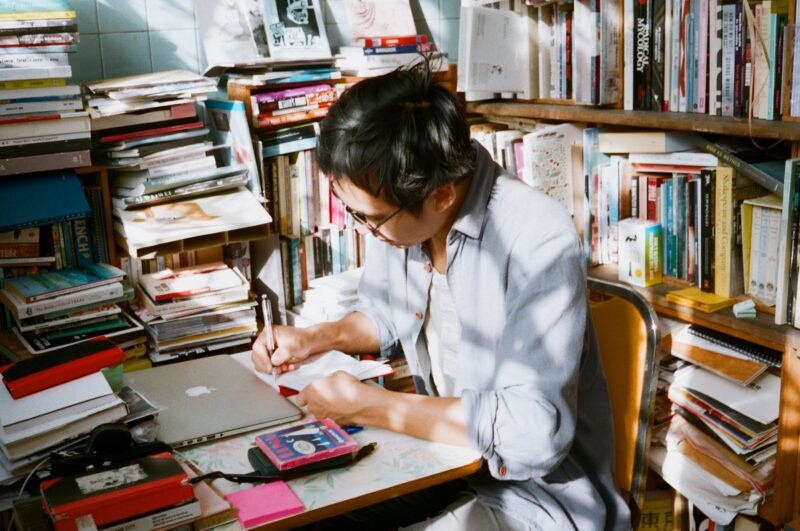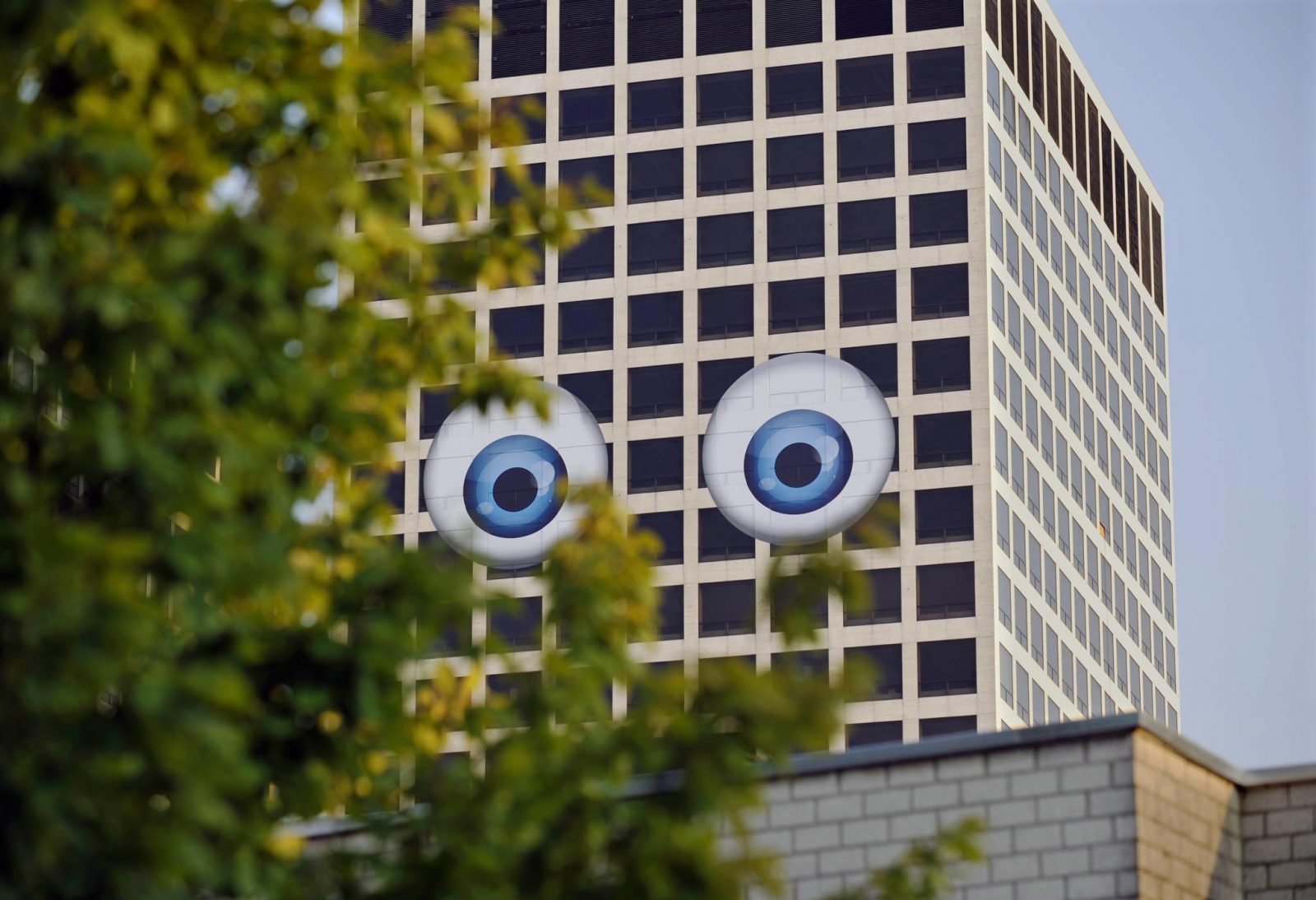Portraits From Above
 Some weeks ago Joop wrote two reviews about the books ‘Hong Kong Inside’ and ‘Hong Kong Outside’ — two stunning photographic documents about people living in Hong Kong’s huge skyscraper neighborhoods. Both books provide surprising insight in the lifes of the city dwellers in their small, totally packed apartments. An earlier article on this blog, written by myself, presents the cage home as another living typology for the urban poor that captures the struggles of the underclass for scarce space in an intensely globalizing city. The book ‘Portraits from Above’, written by Rufina Wu and Stefan Canham and published by Berlin-based Peperoni Books, is a publication that deals with a third housing phenomenon in Hong Kong: the city’s substantial amount of informal rooftop communities.
Some weeks ago Joop wrote two reviews about the books ‘Hong Kong Inside’ and ‘Hong Kong Outside’ — two stunning photographic documents about people living in Hong Kong’s huge skyscraper neighborhoods. Both books provide surprising insight in the lifes of the city dwellers in their small, totally packed apartments. An earlier article on this blog, written by myself, presents the cage home as another living typology for the urban poor that captures the struggles of the underclass for scarce space in an intensely globalizing city. The book ‘Portraits from Above’, written by Rufina Wu and Stefan Canham and published by Berlin-based Peperoni Books, is a publication that deals with a third housing phenomenon in Hong Kong: the city’s substantial amount of informal rooftop communities.
“The rooftop settlements are an urban legacy, telling the story of Hong Kong, of political upheavals in Mainland China, of urban redevelopment, of people’s hopes and their needs in the city.”
This sentence in the introduction perfectly captures the idea behind the 280 pages book, which contains 100 photos taken by Canham of the communities themselves and the interior of the informal dwellings, and 58 architectural drawings by Wu. ‘Portraits from Above’ aims to show self-built, informal settlements on the roofs of high-rise buildings to be an integral part of Hong Kong’s urban landscape. Very interesting is the in-depth unraveling of the rooftop communities. Both authors visited five different settlements for research and carefully described all elements these consist of, including surfaces and specific maps of the dwellings. Furthermore the ‘soft side’ of the phenomenon gets attention — personal stories of the rooftop dwellers and descriptions of what happens behind the thin walls of their homes. No single person is captured on a photo. This might be due to the fact that their homes are built illegally, without the formal approval of the government. Nevertheless, rooftop settlements are also tolerated by the authorities.

The book links the rise of rooftop communities, which are mostly located in old urban areas, to the migration flows of low-income, marginalized people from Mainland China to Hong Kong. “With each of China’s tumultuous political movements in the 20th century, like the Great Leap Forward and the Cultural Revolution, there was a corresponding wave of Mainland Chinese migrating to Hong Kong.” Dr. Ernest Chui, Associate Professor at the University of Hong Kong, explains that rooftop settlements have existed for more than 50 years and will most likely remain for at least another half a century, as Hong Kong’s critical shortage of land will not come to an end. Hong Kong has a very high population density of 6,410 people per square kilometer. The extremely high housing prices force “those who could not afford decent accommodation in the private market, or who were unable to meet the government’s eligibility criteria for public housing”, to seek for unorthodox solutions to maintain life in the city, resulting in renting of partitioned rooms in old tenement buildings or even cage homes/beds.
In order to decrease pressure on the public housing market, local authorities came up with eligibility criteria such as a seven year residency requirement and a means test. These kinds of exclusionary social regulations have led to alternative forms of housing, like rooftop dwellings for the people who “are not yet eligible for public rental housing, and who are unable to afford better private accommodation”. According to 2006 data, there were approximately 4,000 rooftop dwellers in Hong Kong, a group neglected by the rest of society with people that have to make their living in undesirable conditions in very small spaces.

‘Portraits from Above’ reminds of Jennifer Toth’s 1993 book ‘The Mole People’, which describes the same types of communities, but then on the other vertical end of the city — underground. Comparable to Hong Kong, New York City has a population density of some 10,606 inhabitants per square kilometer, and sky high ground prices, especially in Manhattan. Toth found out about more than 5,000 people living underground, down to seven storeys below surface. She discovered organized communities of urban outcasts and also smaller groups, ranging from homosexuals to entire families. The difference between the situations in New York and Hong Kong lies in the specific characteristics of the people. Whereas the rooftop dwellers in Hong Kong mainly consist of the migrant working poor, many of the underground people of New York suffer from mental diseases and consider themselves incapable to handle life ‘aboveground’. Nevertheless, in both cases the focus is on marginalized groups in two highly globalized cities on two sides of the globe, and both situations are rooted in wide income disparity and social inequality engendered by capitalistic development.
Wu and Canham have written a beautiful, thought-provoking document that not only provides complete insight in informal rooftop communities and life in light-weight structures on top of Hong Kong’s mass housing complexes, it also gives clear explanations on how a phenomenon like this has developed. Worth mentioning are Wu’s architectural explorations into the inside and outside of rooftop dwellings, which have resulted in beautiful spatial drawings.
Portraits from Above: Hong Kong’s Informal Rooftop Communities (2009)
Rufina Wu, Stefan Canham
Peperoni Books, Berlin
280 pages
100 photographs in color and duotone/58 architectural drawings
22,5 x 24,8 cm, hardcover with dust jacket
—Order ‘Portraits from Above’ at Amazon.



